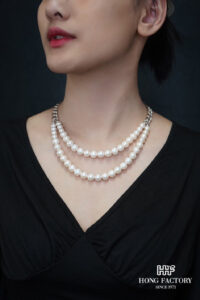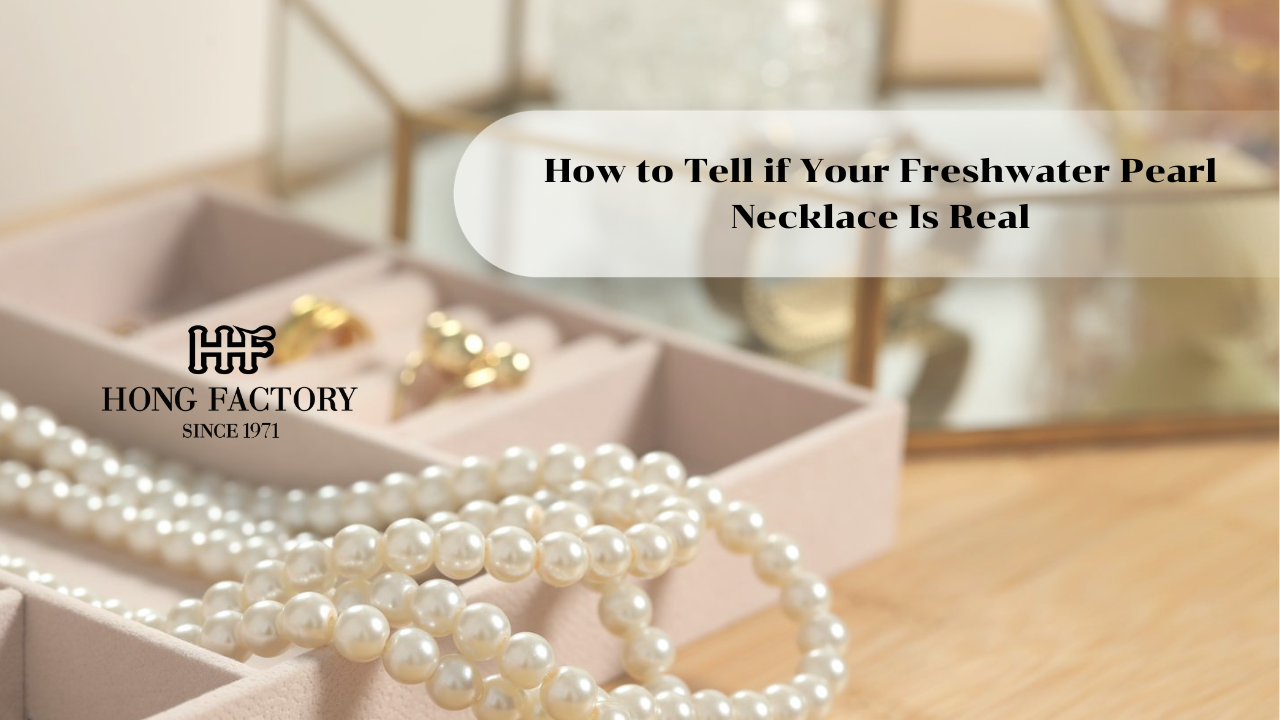A pearl’s natural glow and soft luster have long symbolized elegance and sophistication. However, with the rise of imitation jewelry and advanced manufacturing techniques, it can be difficult to distinguish between genuine and artificial pearls. Whether you’ve received a beautiful heirloom or purchased a new piece, knowing how to verify authenticity ensures your jewelry’s value and quality. In this article, we’ll guide you through how to identify if your Freshwater Pearl Necklace is real, using simple yet reliable tests that anyone can perform at home or with professional assistance. mood ring color meanings
Freshwater Pearl Necklace – Identifying Genuine vs. Imitation Pearls

A Freshwater Pearl Necklace consists of pearls cultivated in mussels or oysters that live in freshwater environments such as rivers and lakes. Genuine pearls have distinct natural properties that can’t be fully replicated by artificial materials. Understanding these characteristics will help you confidently determine whether your necklace is authentic.
- Examine the Surface
The first sign of a real pearl lies in its surface. Genuine freshwater pearls typically have minor imperfections—tiny ridges, irregularities, or faint lines. These natural blemishes indicate authenticity. Fake pearls, on the other hand, tend to look too perfect; their surfaces are smooth, shiny, and uniform because they are usually made from glass or plastic.
Hold your necklace under natural light and rotate it slowly. Real pearls reflect light softly and unevenly, whereas fake ones often produce a sharp, mirror-like shine.
- Check the Shape and Size
Unlike synthetic pearls, no two real pearls are identical. Freshwater pearls often vary slightly in shape, even when strung together in a necklace. Their organic formation process results in natural asymmetry—oval, button-shaped, or baroque pearls are common. In contrast, imitation pearls are often machine-made, resulting in perfectly round and consistent beads.
- Perform the Tooth Test
One of the most well-known methods to check authenticity is the tooth test. Gently rub a pearl against the edge of your front tooth (not your enamel surface). Real pearls will feel slightly gritty or sandy due to the microscopic layers of nacre. Fake pearls feel smooth and glassy, revealing their synthetic coating.
- Observe the Weight
Authentic freshwater pearls have a noticeable weight to them because of their dense nacre composition. Fakes made of plastic are significantly lighter. If you hold your necklace in your hand, real pearls should feel cool and solid at first touch, then warm slightly with your body heat.
- Inspect the Drill Holes

Look closely at the holes where the pearls are strung. Real pearls typically have smaller, neater drill holes with nacre layering visible around the edges. Fake pearls often reveal chipped paint or coating near the holes, a clear indication of artificial production.
- Evaluate the Luster
The luster of a pearl is one of its most distinguishing features. Real freshwater pearls emit a soft, deep glow that seems to come from within. Their surface reflects light in a gentle, multidimensional way. Fake pearls usually have a flat, artificial sheen that appears more reflective and lacks depth. When viewed under different lighting conditions, real pearls seem to change slightly in color tone, adding to their charm.
- Temperature Test
When you first touch a genuine freshwater pearl necklace, it should feel cool against your skin and gradually warm up. Artificial pearls often match room temperature instantly, lacking the thermal reaction of natural nacre.
- Seek Professional Appraisal
If you’re still uncertain, take your Freshwater Pearl Necklace to a certified jeweler for professional testing. Jewelers can examine the pearls under magnification and use advanced methods—such as X-ray analysis or refractometers—to confirm their authenticity. They can also provide you with a certificate of authenticity if your pearls are genuine.
Additional Tips for Buyers
When purchasing freshwater pearl jewelry, it’s important to buy from reputable sellers. Look for transparent product information and certification when available. Here are a few helpful reminders:
- Genuine freshwater pearls often come from regions known for pearl farming, such as China, Japan, and Thailand.
- The string between real pearls is usually knotted to prevent rubbing and damage.
- Avoid deals that seem too good to be true; real pearls have intrinsic value due to their organic origin and craftsmanship.
Caring for Your Real Freshwater Pearl Necklace
If your pearls are authentic, proper care will ensure their beauty lasts for generations:
- Wipe them gently with a soft cloth after each use.
- Store them separately from other jewelry to prevent scratches.
- Avoid exposure to perfume, hairspray, or acidic chemicals.
- Wear them regularly—pearls benefit from the natural oils in your skin, which help maintain their luster.
Determining whether your Freshwater Pearl Necklace is real doesn’t require expert-level training—just a bit of attention and care. By examining texture, weight, luster, and shape, you can distinguish genuine pearls from imitations with confidence. While fake pearls may mimic the appearance of the real thing, nothing compares to the natural warmth and radiance of authentic freshwater pearls. Investing in real pearls means owning a piece of nature’s artistry, one that continues to symbolize purity, elegance, and enduring beauty.
